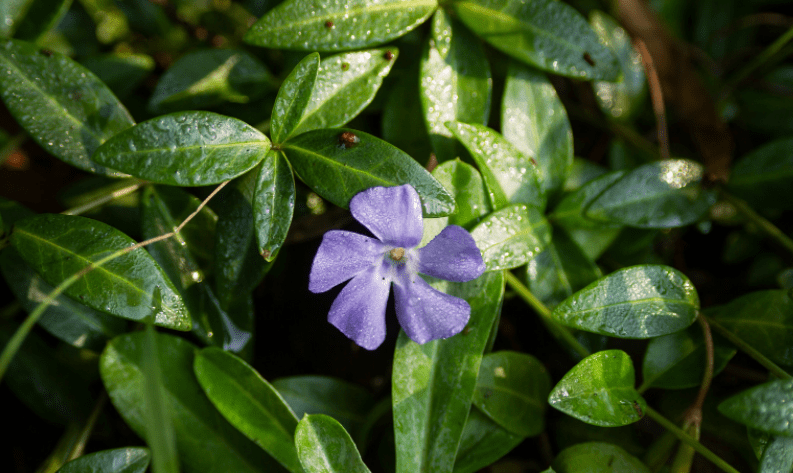Vinca Vine
An ancient plant, Vinca vine, whose ancestors have been with us for millennia. Periwinkle, Vinca Minor, and Myrtle are all common names for Vinca.
Vinca comes in both annual and perennial varieties. Both varieties do well in containers, though the yearly varieties grow faster.
It is a trailing vine with quarter-sized shiny leaves. The variegated Vinca is the most popular, with dark green leaves with cream-colored margins.
Vinca’s trail should be about two to three feet long. Plant it in a sunny or shady spot, and pay attention to how much water you give it. Vinca should not become too dry if grown in full sun.
Vinca Vine Indoors Wintering
Many of the houseplants we grow are explicitly developed indoors. They are often hybridized to survive the low light and humidity-starved conditions of our homes.
However, I have not thought of growing outdoor plants, specifically indoor plants. Usually, it does not work. It is difficult for bedding plants to survive indoors as they stretch and lean toward the light.
They are adapted for outdoor growing and generally cannot survive many months indoors, let alone years.
One can recognize the trouble almost instantly as the plants which will not grow indoors rapidly show signs of ill adaption. Although that is the case for many plants, I discovered a Vinca vine growing inside a tiny gift shop, almost in the dark.
My immediate comment was that it would not survive, but I zipped it. Instead, I asked how long it had been in that location.
The clerk replied that it had been there several months. It looked like it had arrived freshly that week.
Amazed, I reached up to touch it and discovered that it was bone dry but had no signs of stress. It showed no signs of dehydration, and I began to think that perhaps this would be a good plant for indoors.
I found that the plant looked great, was drought-tolerant, and remained healthy with long periods of poor light, ideal for an indoor plant.
If you are searching for something unusual, look to taking your Vinca vine in for the winter. Expect to see a few yellow leaves at first, as they may adjust from higher to lower light but will not show huge signs of difficulty in adaptation.
The vines are tough and often can be seen as choices for hanging baskets and containers in shady locations.
Vinca Vine Indoors Care
The care for Vinca vines is minimal; they are heat tolerant and take no special care.
The soil is generally houseplant soil but well-drained to not rot the roots with excessive moisture.
Indoors, a soluble fertilizer with the numbers 12-12-12 should be applied every other month. The plant blooms a beautiful periwinkle blue in the spring and is stunning.
The trumpet-shaped flower is the distinguishing feature of the blossom, but it is unlikely to bloom indoors.
The ovate leaf of the Vinca vine has a soft white or cream edge that gives it a lovely appearance.
The soft greyish green leaf adds interest among the deep greens of other houseplants.
Vinca minor variegata comes in various bloom colors, but it will almost certainly need to be planted outside to bloom.
The plants can be cultivated from seed, but it takes a long time to reach the bloom stage. The flowers do not need to be deadheaded; they will fall off independently.
If you want to put the Vinca out in the spring, make sure it’s in a shady spot away from the sun.
For a superior trailing plant, tuck young plants into clay containers. They look great in red clay pots, both inside and out.



























